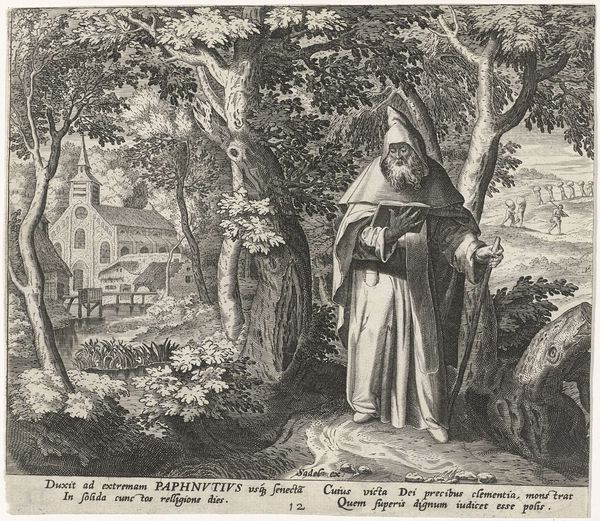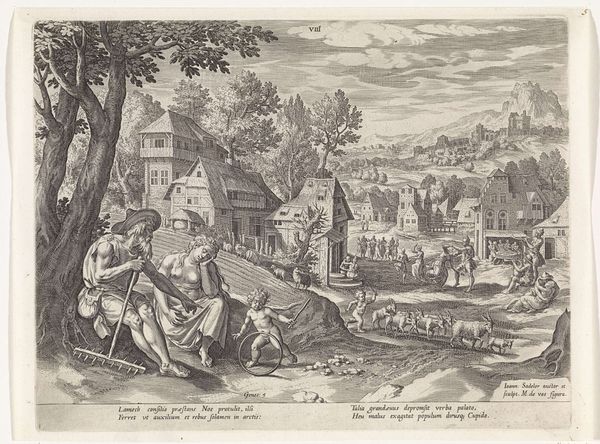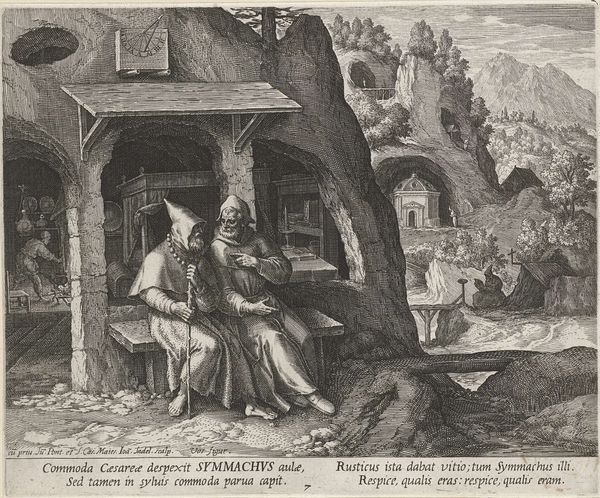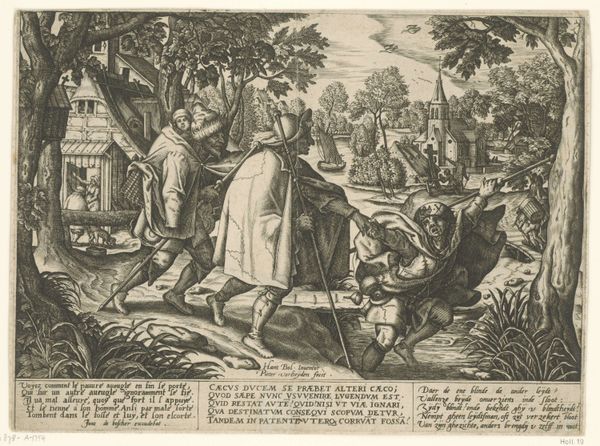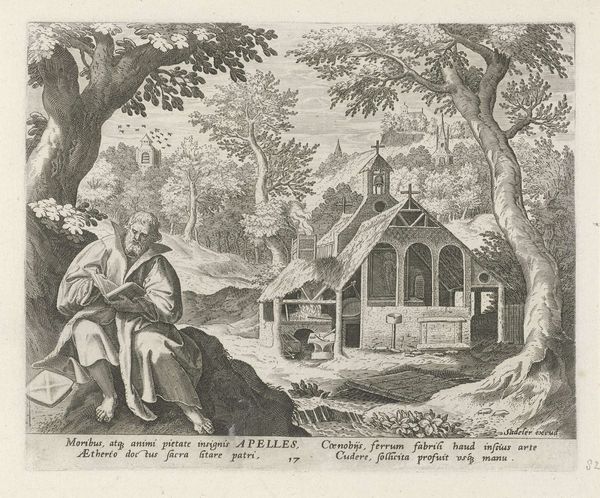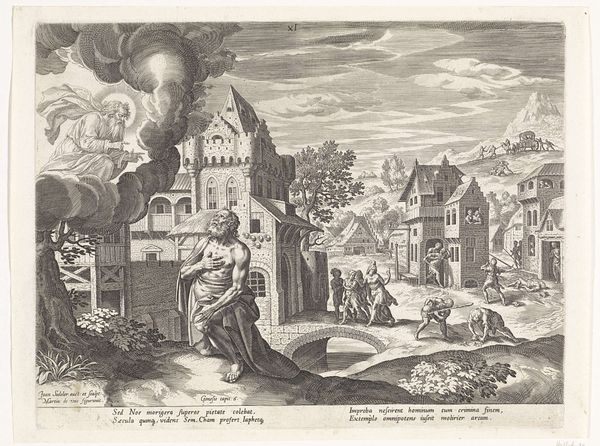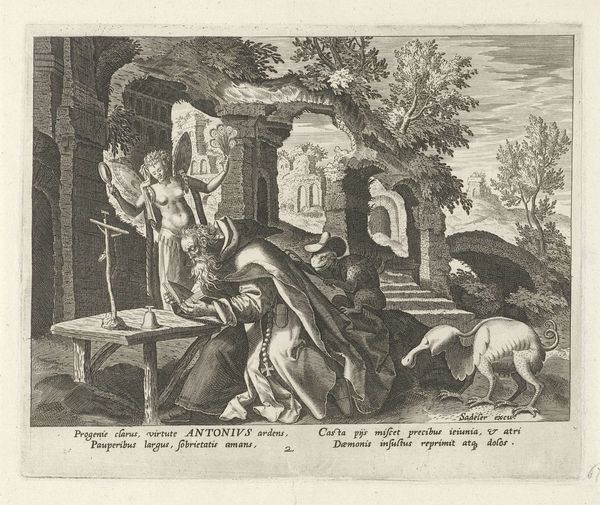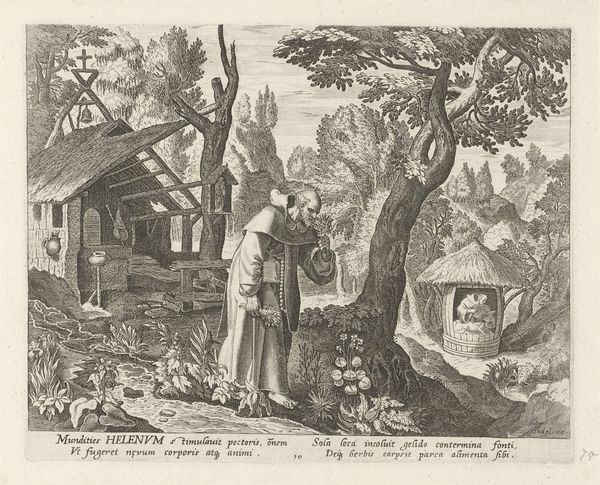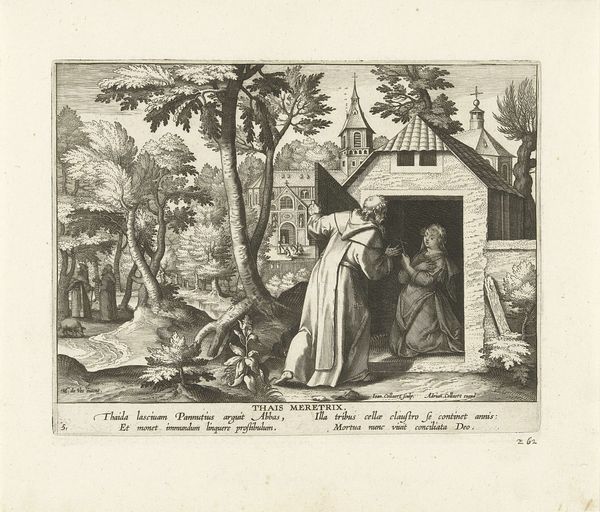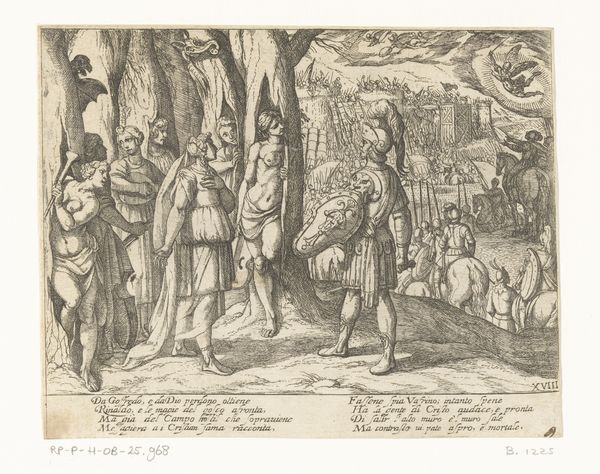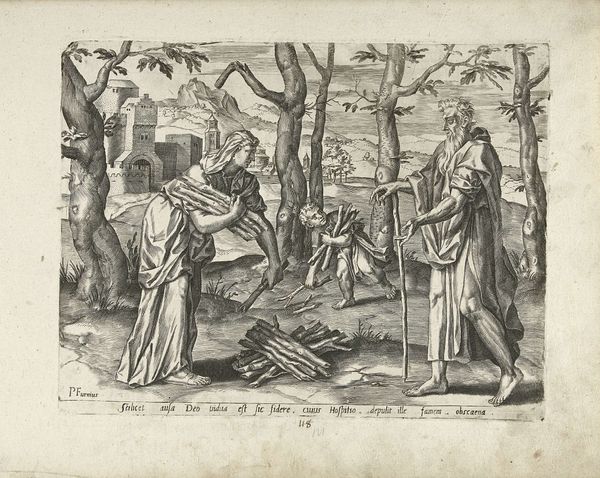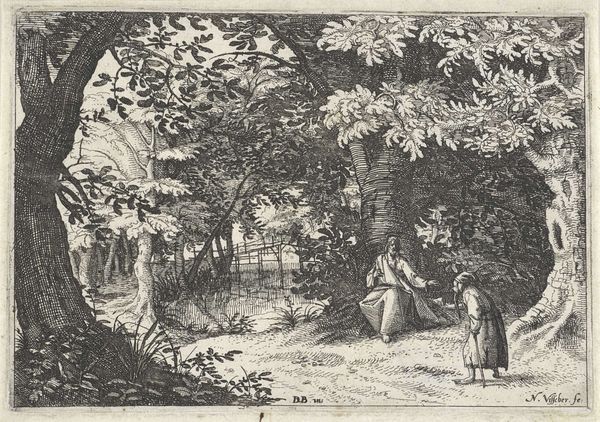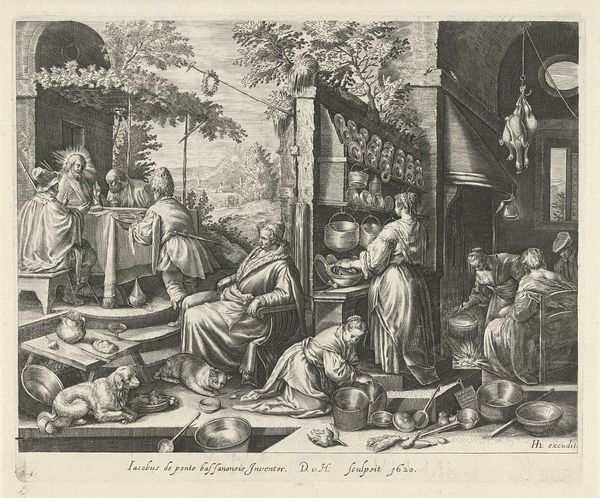
drawing, print, ink, engraving
#
drawing
# print
#
pen illustration
#
landscape
#
mannerism
#
ink
#
engraving
Dimensions: height 174 mm, width 210 mm
Copyright: Rijks Museum: Open Domain
Editor: This engraving, "Ciomus de kluizenaar" from 1583-1588 by Johann Sadeler I, made with ink, presents a hermit in a landscape. I'm immediately struck by how much detail Sadeler achieves with just lines, it makes it look both rustic and very refined. How do you see this work? Curator: It's interesting to consider this print through a materialist lens. Think about the production of engravings at the time. Each line represents a physical action, a craftsman meticulously carving into a metal plate. The ink itself becomes a vehicle for communicating religious and social ideals about piety and withdrawal from society. Editor: So the medium is actually quite telling about the message? Curator: Precisely. The labor invested, the replicability of prints for a wider market—these factors shift our understanding from a purely aesthetic appreciation to an awareness of the art's function within the economy and social fabric. Were these prints primarily for religious institutions, or for wealthy patrons seeking meditative imagery? The intended audience directly impacts our understanding of its message. Editor: That's a good point. I never considered who would have bought something like this. Does the choice of landscape play a part in its message, or just it just an aesthetic choice? Curator: The landscape is itself constructed. The choice of ink, the method of reproduction allows nature itself to become a commodity, or even an ideology about retreating from the public world into a manufactured spiritual one. This challenges that Romantic idea of being 'in nature.' What do you make of the contrast between the detail of the figure and that of the landscape itself? Editor: I see now... it emphasizes the artificiality, almost like he's withdrawing into a space that's been constructed as much as any city. Looking at it now, it feels like a comment on organized religion, its buildings and order! Curator: Exactly. This work allows us to examine the material conditions that produced not just the art object but the very concepts it represents: religion, labor, and even nature itself. Editor: This really gives me a fresh outlook on what was once simply a pretty landscape. I understand now it is so much more about work, materials and consumerism that one could ever have known!
Comments
No comments
Be the first to comment and join the conversation on the ultimate creative platform.
